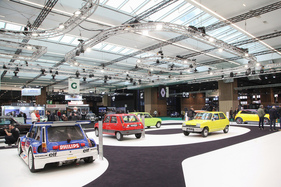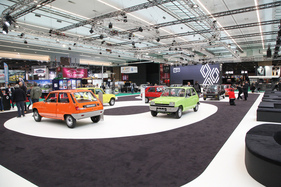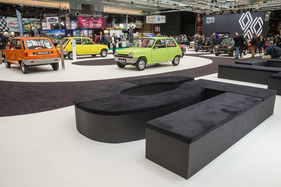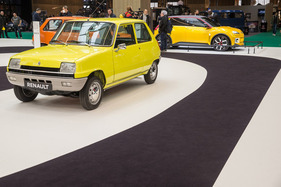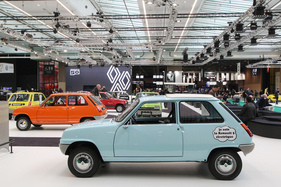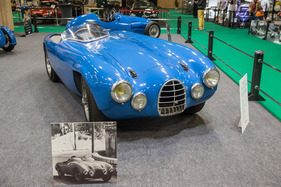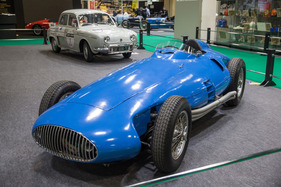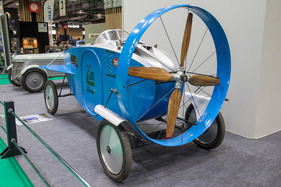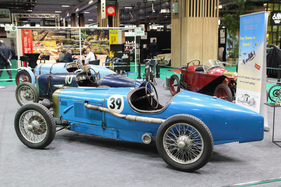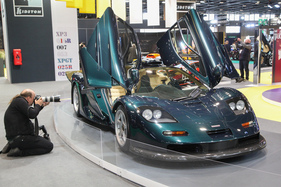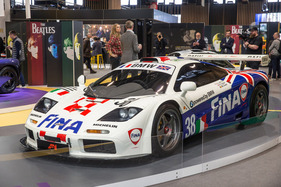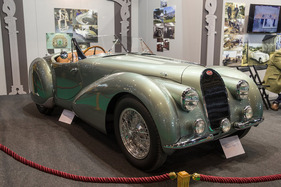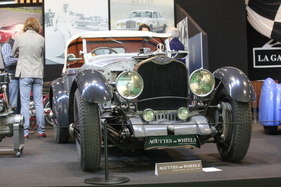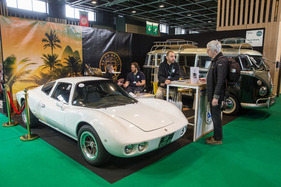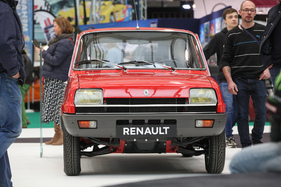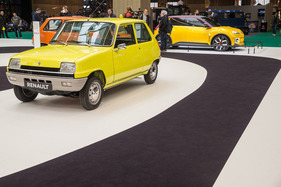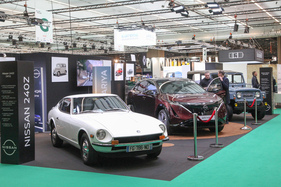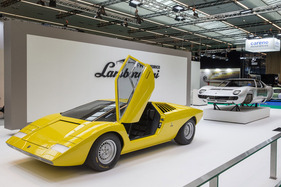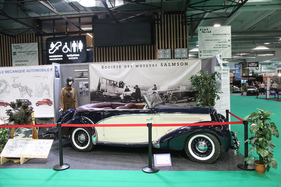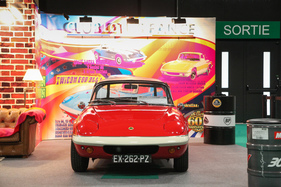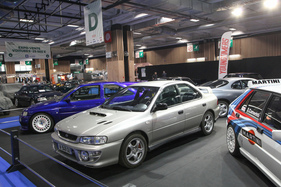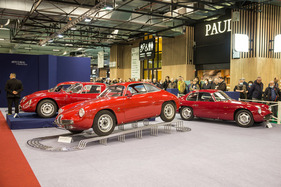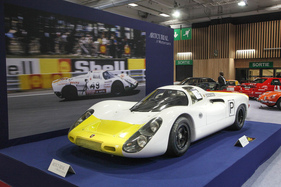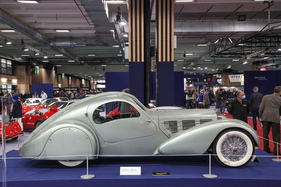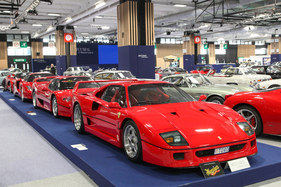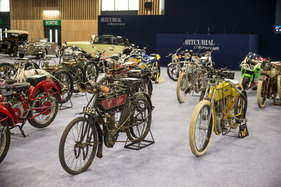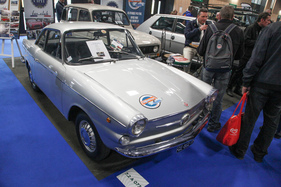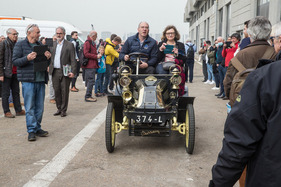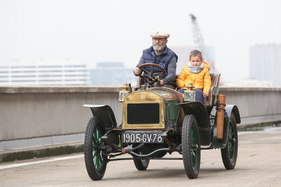After a two-year break, almost everything was different at Rétromobile Paris, which opened its doors at the Porte de Versailles from March 16 to 20, 2022. Those who were used to the old, somewhat outdated and labyrinthine Halls 1 and 2 from the past were initially shocked to find that they were no longer available.
Instead, the classic car fair took place on two floors of the more modern Hall 7 at the end of the exhibition grounds and by the time you got there from the Porte de Versailles, you had already covered almost a kilometer. At least there were taxiways, just like at the airport, which were easy on the shoes and physical condition of the visitors, many of whom were no longer very young.
Shrunk
The one-month postponement from February to March 2022 did not leave the trade fair unscathed. Many exhibitors that you would normally meet every year were absent. Neither Lukas Hüni, Gregor Fisken, Max Girardo, RM/Sotheby's, Axel Schütte or Richard Mille set up one of their generous and always worth seeing stands.
Many car manufacturers also (officially) stayed away from the fair, as did many other exhibitors, so that in the end two floors of Hall 7 (or around 54,000 square meters) were enough to accommodate the entire fair. And even there, one or two corners remained unused.

Nevertheless, there was no shortage of visitors, and the aisles were as full as ever, although it is doubtful whether the numbers were as high as in previous years. However, the atmosphere on site was good, perhaps even a little more relaxed than in previous years. It was only at the food stalls that there were sometimes very long queues and who wants to queue for half an hour for a ham sandwich?
Clearly laid out
By concentrating on two rectangular and well-lit halls, the Rétromobile became much clearer. It was almost impossible to miss larger exhibitors and there was also enough space for visitors in the aisles. Thanks to the two-storey concept with central escalators, the distances were always relatively short if you wanted to go back from one stand to another. And as in the past, the new hall also offered the opportunity to organize driving demonstrations outside the building. But more on that later.
Gordini special show
A highlight of the show was certainly the exhibition of Gordini racing and sports cars, complemented by Renault-branded road cars. The various creations of Amédée Gordini (1899 to 1979) are rarely seen together.
The cars on display included the Type 31S from 1954 (chassis 043), which took first place in the 2 to 3 liter category at the 24 Hours of Le Mans in 1954, won the Tour de France Automobile in the same year and was victorious in the Pescara Grand Prix in 1956.
Also on display was the Type 16/24 Formula 1 car, which finished first in the 1955 Paris Grand Prix in Montlhéry and is normally exhibited in Mulhouse.
The entire special show comprised five racing cars, plus a racing transporter and road vehicles such as the Renault 12 Gordini.
When lightness and ingenuity were still enough to win races
The cars presented at the Vintage Revival Montlhéry stand were hardly less interesting than the vehicles in the Gordini show.
There were propeller-driven cars, adventurous tricycles, aerodynamically optimized microcars, but also the better-known cycle cars and lightweight sports cars of the 1920s and 1930s.
Highlights on the stand were certainly the Amilcar C6, but also the BNC and S.P.A.G. on display.
The seven McLaren F1s at Kidston
Simon Kidston had landed a real coup. He was one of the few major international dealers to exhibit in Paris and dedicated his stand to the McLaren F1 and the Beatles, but above all, of course, to the three-seater super sports car.

The value of the seven sports and racing cars on display was probably easily in the nine-figure range.
The exhibits included not only the road-going super sports car, of which fewer than 100 were built, but also racing cars and prototypes such as the XP3 or the rarely shown green 053 XPGT long-tail prototype, which was last seen at the 2015 Geneva Motor Show.
Arranged in a circle, the seven McLaren cars attracted visitors like flies and some probably overlooked the Beatles decoration at the back of the stand.
The mysterious Bugatti 73
Almost every visitor to Rétromobile was probably familiar with the Bugatti Type 35 or 57, but the Type 73, which was displayed by a restorer as if it were a new car, probably made even the most enthusiasts wonder. In fact, Ettore Bugatti had tried to build on his earlier successes after the Second World War with a new four-cylinder engine and new vehicles.
However, the so-called Type 73 never made it out of the starting blocks and, apart from the racing cars, we only know of a not particularly attractive road-going coupé that is part of the Schlumpf collection in Mulhouse. But there was an elegant convertible at the Rétromobile!
And the Bugatti 73 was of course not the only rarity that gave rise to discussion.
At Aguttes, for example, there was the only surviving example of an Omega Six from 1928 to admire. The stately convertible is said to have once been driven by Hellé Nice, who became famous as a model, dancer and racing driver. The technology came from Hispano-Suiza.
The Bianco S, which Ottorino Bianco produced in Brazil in the 1970s, is hardly better known in this country than the Omega Six. Like its better-known rival Puma, the passionate racing driver used the locally manufactured Volkswagen base to save costs and put a plastic coupé body on it. It is said that only a double-digit number were made, which is why the cars are rare even in Brazil.
It was like every year, you just had to walk through the halls with open eyes and you saw many specialties and rarities and there were very few repetitions, as is sometimes the case at other trade fairs.
50 years of Renault 5
Renault really went all out to celebrate the 50th birthday of the Renault 5. Not only had the number "50" been laid as a carpet under the stand, but the lettering "Renault 5" was also offered to visitors as a seat.

13 Renault 5 models told the story of the "little friend" and neither the early single models nor the late mid-engine turbo variants were missing. With the prototype of the electric R5, which was shown at the IAA in 2021, the bridge to the future could be built.
A coherent presentation!
The Citroën stand was much clearer. After all, important models from the company's history (Rosalie, Traction, 2 CV and co.) were also on display and the 40th anniversary of the Citroën BX was also celebrated, but apart from Citroën, the other PSA brands, which have included Opel for some time now, were ignored.
Nissan, on the other hand, was present with a Datsun 240 Z and a Patrol from the 1970s.
Also represented were Morgan (with new cars) and Lamborghini, where the reborn Countach LP500 from 1971 and a Miura SV in the process of being restored were on show. That was it as far as the brand stands were concerned.
Clubs with a French flavor
The club stands are always interesting in Paris, as France naturally celebrates its own car brands in particular, including those that are hardly ever seen here.
The Rétromobile 2022 was no exception, as the Friends of the Simca Vedette, the D.B. Amicale and the Salmson Club brought rare vehicles to the capital as they do every year, and the Facel-Vega Association did the same. And anyone meeting friends or acquaintances there shouldn't be surprised if it took hours before they could set off on their onward journey again, having been treated to wine, cheese and bread.
The Lotus supporters, who celebrated the 60th birthday of the Lotus Elan with a red Sprint DHC and colorful decorations, provided the international balance.
Rally cars of the youngtimer generation
The French magazine "Youngtimers" dedicated its stand to the rally icons of the nineties.
Evolution and rally models from Lancia, Ford, Subaru and Toyota, to name just a few examples, were on display in a colorful compilation.
The show within the show
With 170 cars, Artcurial made a significant contribution to the success of the Rétromobile. Not only did the French auction house occupy around a third of one floor of the hall, but the three auctions on Friday, Saturday and Sunday afternoon were also highlights of the trade fair. Unlike in previous years, the auctions were not held separately from the exhibition but as an integral part of it.
However, only those visitors who expressed an interest in bidding or at least buying an auction catalog had access to the interesting cars. Those who didn't make it behind the balustrades missed out on a lot!
At Artcurial, there was not only a works Porsche 907 from 1968 with Le Mans history on display, but also a Gordini 18S, which was driven by Juan Manuel Fangio at the time.
The Bugatti Type 57 Aérolithe was breathtakingly beautiful and a collection of three Zagato Giulietta/Giula models from Alfa Romeo is just as rare as seven Bandini sports and racing cars.
Younger visitors, meanwhile, enjoyed a collection of Ferrari super sports cars from the F40 to the LaFerrari, while plastic car fans took more pleasure in the two CGs or the Alpine A110.
There was also plenty to see for motorcycle fans, and a nice selection was also presented for pre-war enthusiasts.
(The results of the Artcurial auction have been documented in a separate report).
The sales area for the cheaper vehicles
As in previous years, the sales area for inexpensive vintage and classic cars, which could be sold for a maximum of EUR 25,000, was interesting and a good idea.
This in no way restricted the selection to local classic cars such as the 2 CV or R4. No, you could also find a Fiat 600D Coupé dressed by Vignale or a bright yellow Puma 1600 GTE from Brazil, as well as a large selection of Fiat 500s and various interesting youngtimers.
The beginnings of motorization inside and outside
We have saved one of the highlights for last: the oldest cars at the Rétromobile. In fact, you had to look all the way back to the 18th century to find the beginnings of the self-propelled car.

As early as 1770, "Le Fardier de Cugnot" set off on its own for the first time for around 15 minutes, powered by steam and traveling at a speed of four kilometers. The huge vehicle was actually more similar to a locomotive than the later automobile, but rails were not needed.
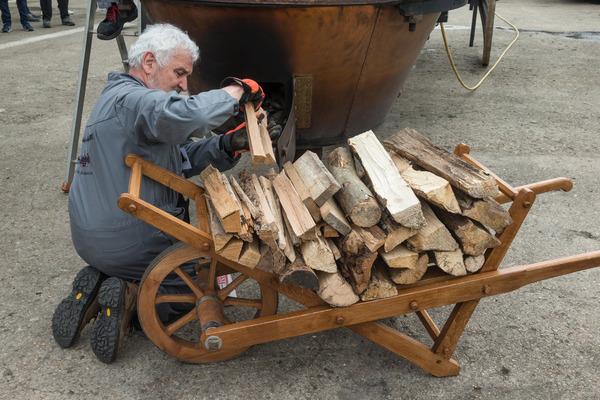
The original has only been on display in the museum for a long time, but a replica could be admired at the Rétromobile not only standing but even driving, if you were patient enough to wait until the boiler had built up enough pressure to set off.
However, the time was shortened by the "Teuf Teuf" fans, as the fans of very early automobiles call themselves in France. They not only displayed their vehicles standing up, but also took their Darracq or Salmson for a public drive in front of the halls.
The classic car enthusiasts who managed to get a passenger seat were thrilled, even though there was hardly much more than a hundred meters of track available.

Despite the reduced size and fewer superlatives than in other years, most visitors probably left the Rétromobile with a smile on their faces. After all, they were also less tired than in other years, unless they had attended the Artcurial auction on Friday and stayed until it ended after 9 pm.














































































































































































































































































































































































































































































